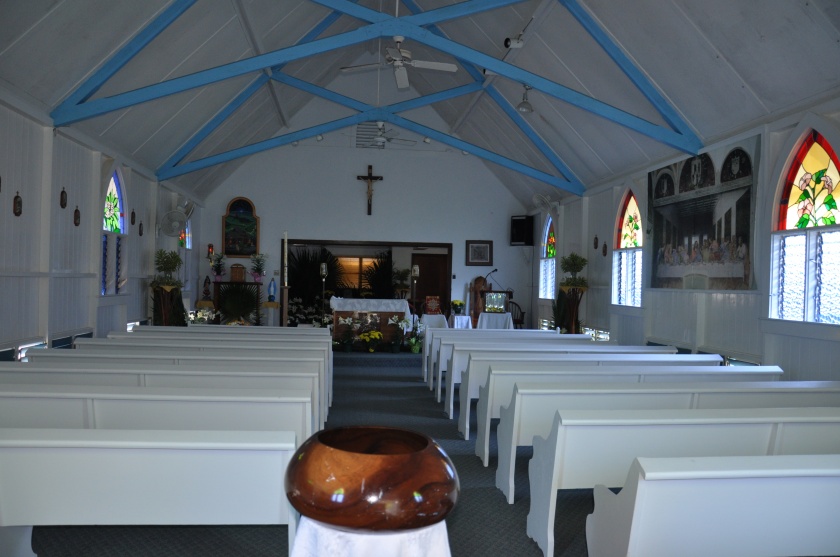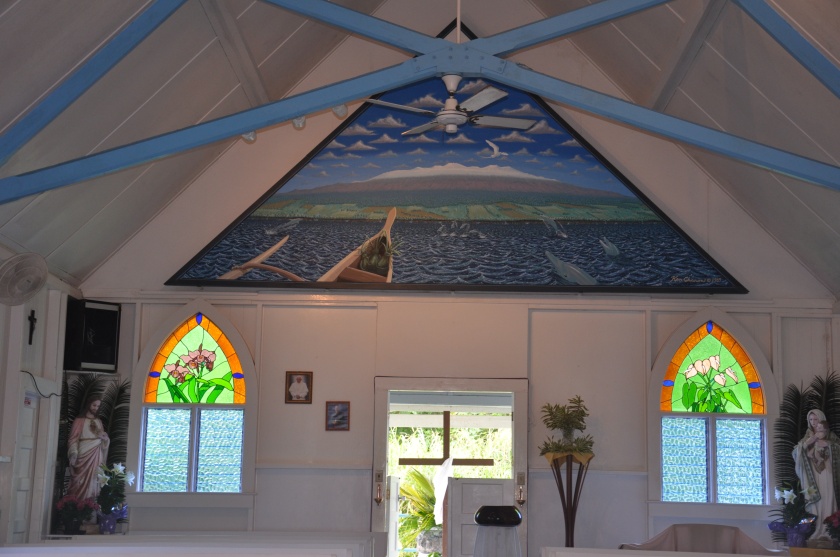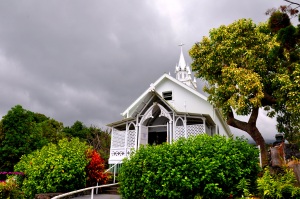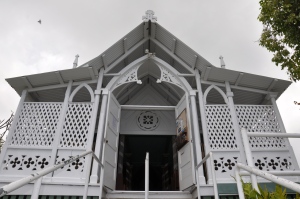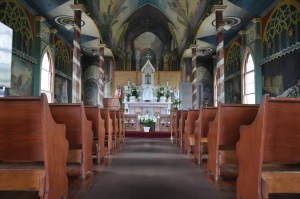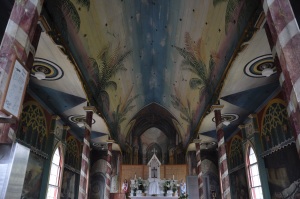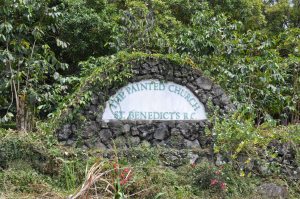Hwy 130 to Kalapana, Kaimu, HI 96778
Located on Highway 130 between mile marker 19 and 20.
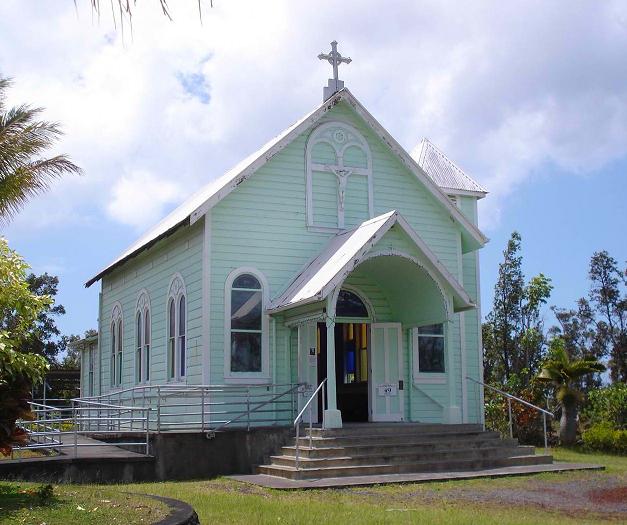
Contained within the simple green and white exterior is a fine example of the unique and striking of religious folk art of the Hawaiian Islands.
In the early 1900’s, Father Ulrich Taube, SS.CC., built a small wooden church in the growing village Kalapana. Sacred Hearts Father Evarist Gielen, SS.CC., arrived in the Puna region in 1927, and sometime after purchased a small piece of land along the Kalapana shoreline to build a new church near the beach as a mission chapel of Sacred Heart Church in Pahoa. Father Evarist commenced building in 1930 using leftover wood from Sacred Heart and run-down chapels in the area. Within seven months and at a cost of only $2,500, Father Evarist completed the church, along with a small rectory and gymnasium.
The church was solemnly blessed on April 19, 1931 and dedicated to the Blessed Virgin Mary under the title of Star of the Sea, the patroness of Catholic missions to sailors and seafarers. Stella Maris is a name for the “North Star,” Polaris, which provided navigational direction in antiquity. The name was applied to Mary in the early centuries of the Christian Church as a sign of hope, a guiding star for Christians pointing toward her son Jesus. The Marian prayer, Ave Maris Stella, became a popular devotion during the Middle Ages.
The green and white Colonial Revival church, typical of many other Catholic mission churches on the Islands, features a square tower. Square tower. The interior features Corinthian columns and a barrel-vaulted ceiling composed of three grand sections subdivided by six paintings. On the right side the Death of Ahab, St. Cecilia, and The Mocking of Christ. On the left side: The Death of a Sinner, The Guardian Angel, and Christ the King. The lunette above the door features a twenty-two feet wide and fourteen feet high Nativity scene, the single largest painting in any of Hawaii’s “painted churches.”
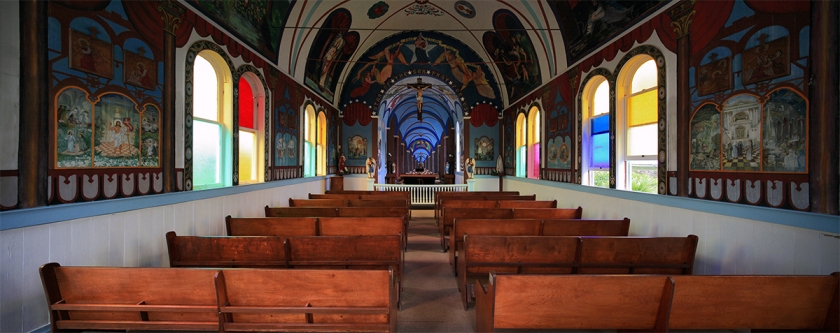
On the arch above the altar, four angels carry a ribbon with the Hawaiian words “Maria ka koku O ke kai e pale oe makou,” and the English translation below, “Star of the Sea, pray for us.”
Star of the Sea is one of three “painted churches” on the Big Island, including St. Theresa’s in Mountain View, also painted by Father Evarist, and St. Benedict’s in Honaunau by Father John Berchmans Velghe (Father Evarist’s teacher). Father Evarist used house paint mixed with linseed oil to compose the colorful murals throughout the church interior depicting scriptural scenes and devotions based on St. Benedict’s Church and his catechism, Le catechism en images. Father Evarist insisted the primary motive for his paintings was the education of parishioners rather than artistic originality.
The murals took about four and a half months to complete. Father Evarist reportedly spent his nights by candlelight or kerosene lamp painting the chapel, when he could concentrate without disturbance or noise. The upper walls were painted in subdued yet resonant gray and blue tones.
Father Evarist eventually retired to Maui, and over time other artists contributed to the artwork. In 1964, at the invitation of then pastor Father Joseph McGinn, a hitchhiker artist from Athens, Georgia named George Heidler added koa wood Stations of the Cross and brightly colored paintings to the lower walls of the church. However, in 1975, when parishioners invited the retired Father Evarist to visit in celebration of his 50th priestly anniversary, the historian Father Louis Yim relates that, “A shocking incident took place. Without a word to anyone, the old priest went into the church with a can of light blue paint and covered over Heidler’s painted scenes on the church walls.” Father Evarist spent three months repainting and restoring his 45 year-old murals.
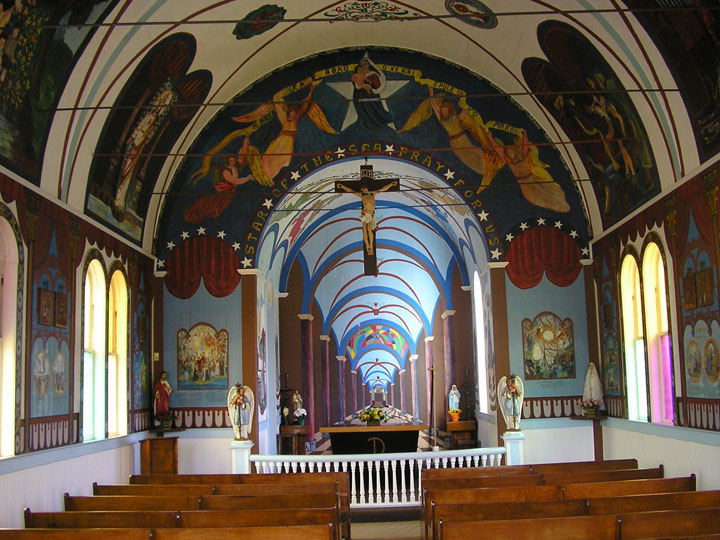
In 1978-79, Father Joseph E. Avery commissioned the Hilo artist George Lorch to paint a series of miniaturist murals over Gielen’s light blue paint and blank spaces. Lorch’s work portrays figures and events of Catholic history and devotion including: Fifteen Mysteries of the Rosary in the Hawaiian language, the Miracle of the Sun at Fatima, and two priests of the Congregation of the Sacred Hearts. Lorch also painted figures of the native Hawaiian religious past, such as the ancient Tahiti priest Paao; the Fire Goddess, Pele; Kahapu’u, the Prophetess of Puna. Together the paintings form a coherent and complimentary piece. As art historian Alfred Frankenstein notes, Father Evarist’s paintings are still easily discernible as having more chiaroscuro.
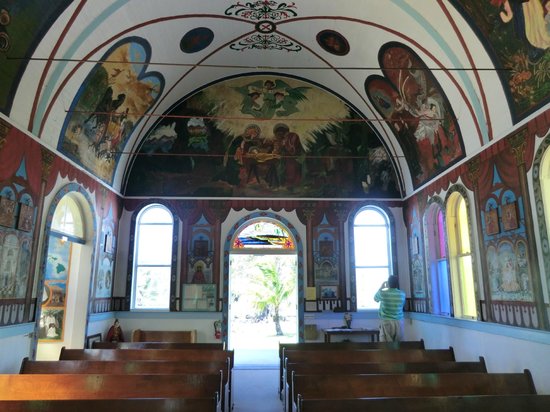
In 1984, local artist Stephen Engholm created the etched stained glass windows of Saints Damien of Molokai and Mother Marianne Cope were created in the tower.
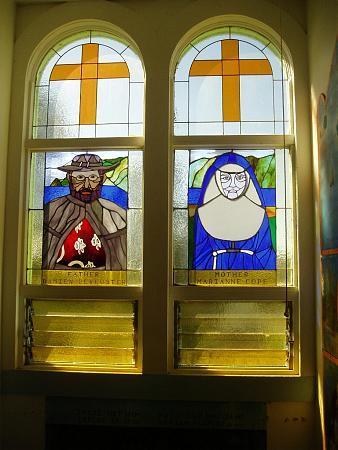
The small, sturdy church escaped a number of natural disasters, especially the threat of destructive lava flow from Kilauea volcano. Volcanologists advised the church to relocate after close calls in 1977 and 1986.
In 1990, a disastrous lava flow lasting nearly six months overran many homes in Kalapana and threatened the historic church. On May 4, A Kohala contractor and a few parishioners offered to transport the 22’ by 48’ chapel, including its bell tower and rear sacristy, for free using a flatbed truck to Kaimu, approximately 1.5 miles east. The church temporarily sat on a lot along Highway 130 until May 5, 1996 when it was moved to its present location between mile markers 19 and 20.
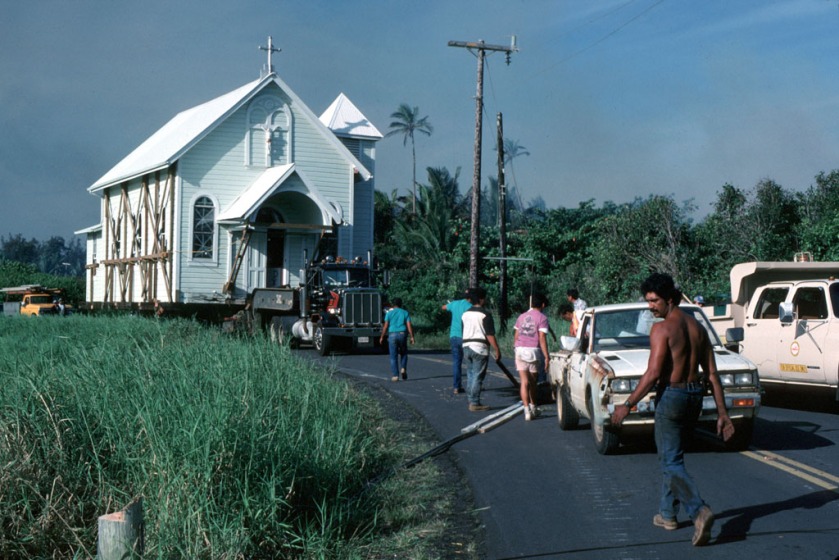
Although occasionally Catholic liturgies are still held, the Diocese of Hawaii decommissioned Star of the Sea in 1995 as an active place of worship. Today the church is owned and cared for by the nonprofit Kalapana Ohana Association. The group relies on donations from tourists and visitors to maintain and repair the church. The church was added to the National Register of Historic Places in 1997.
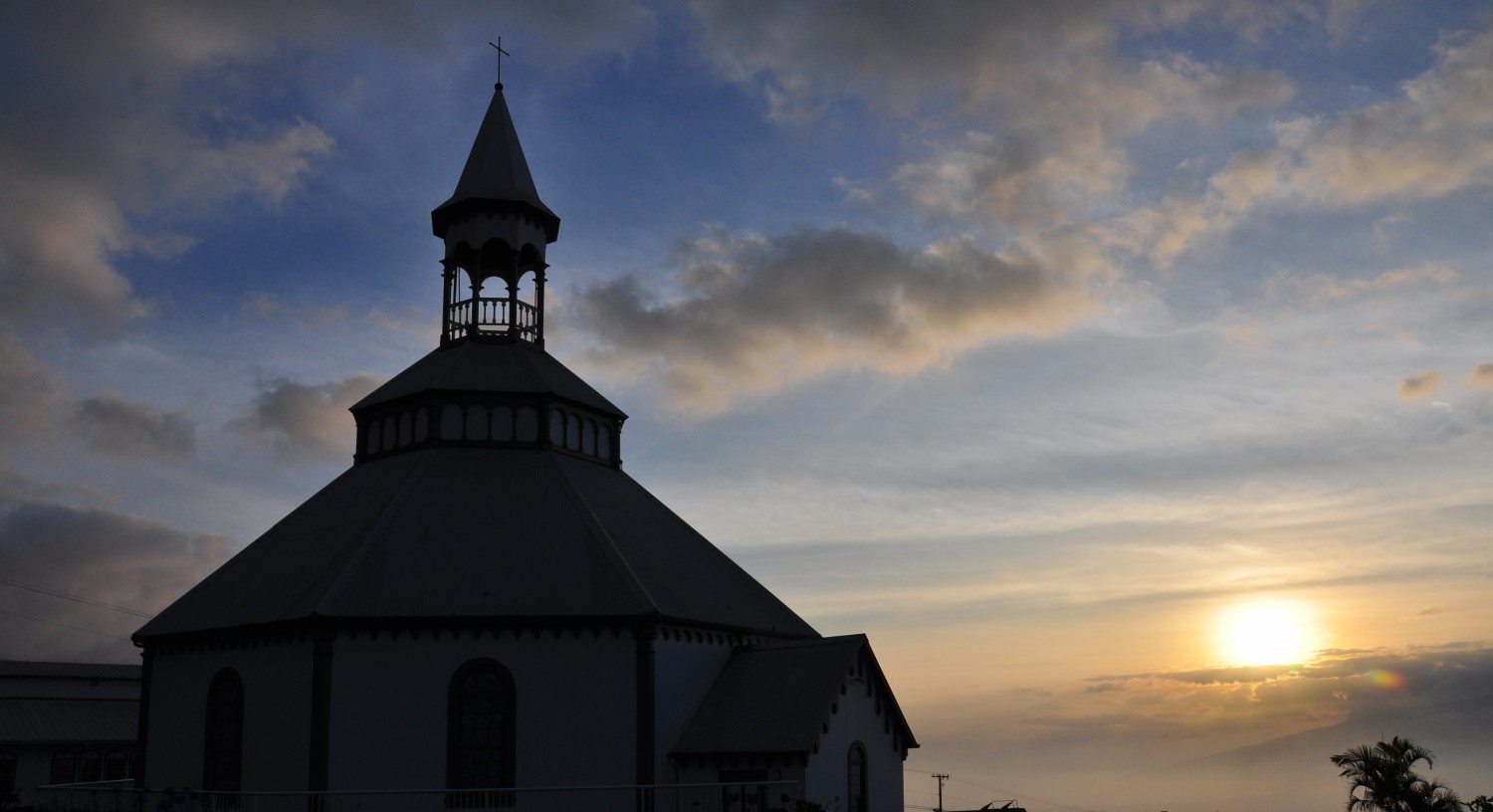

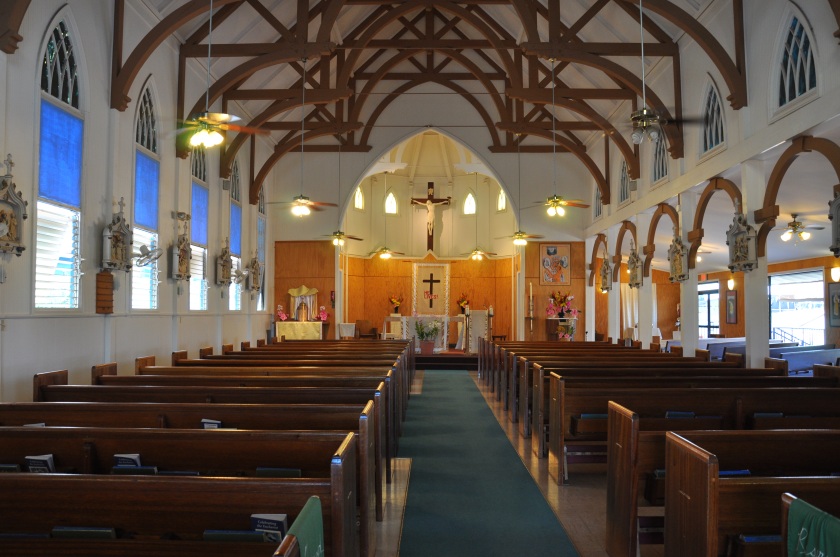
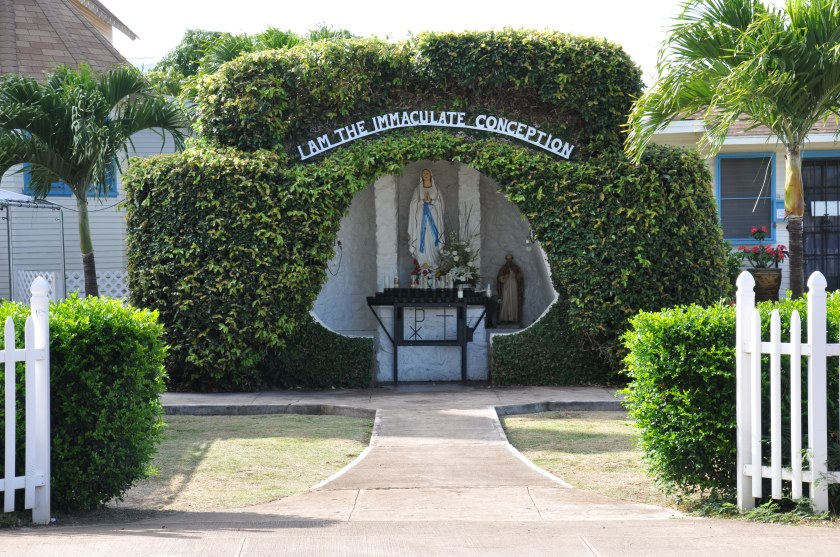
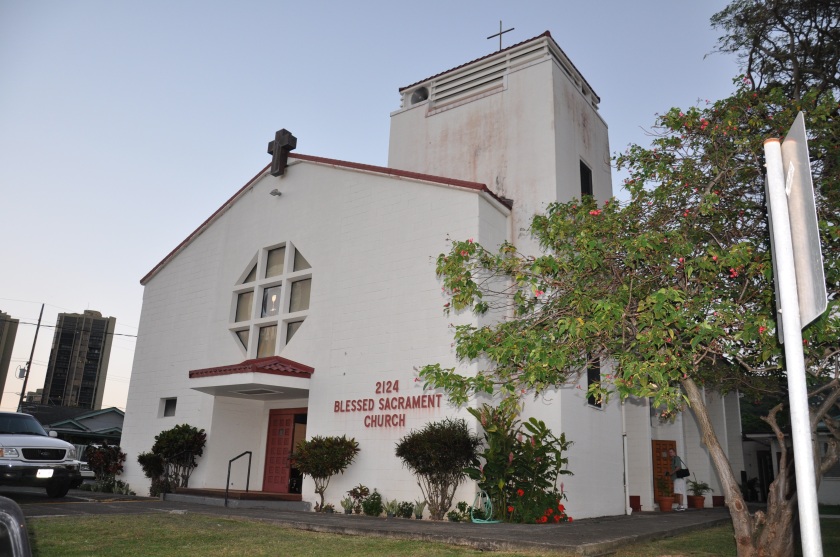
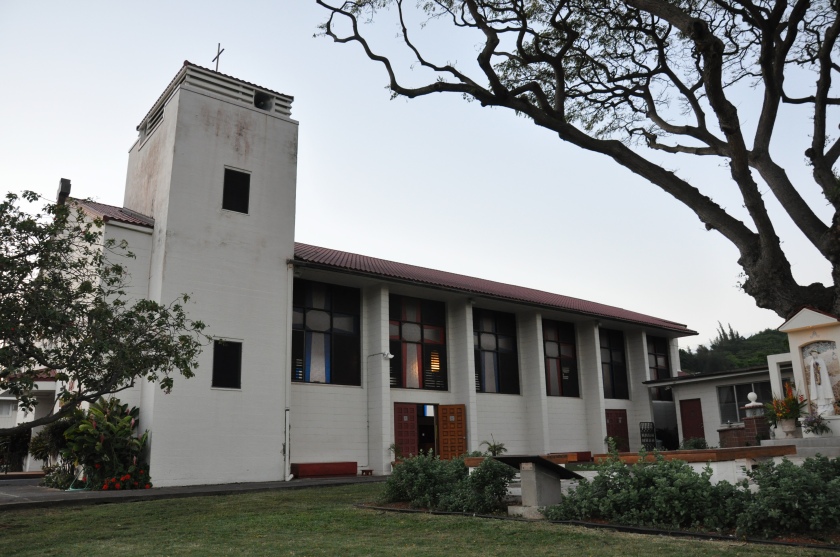
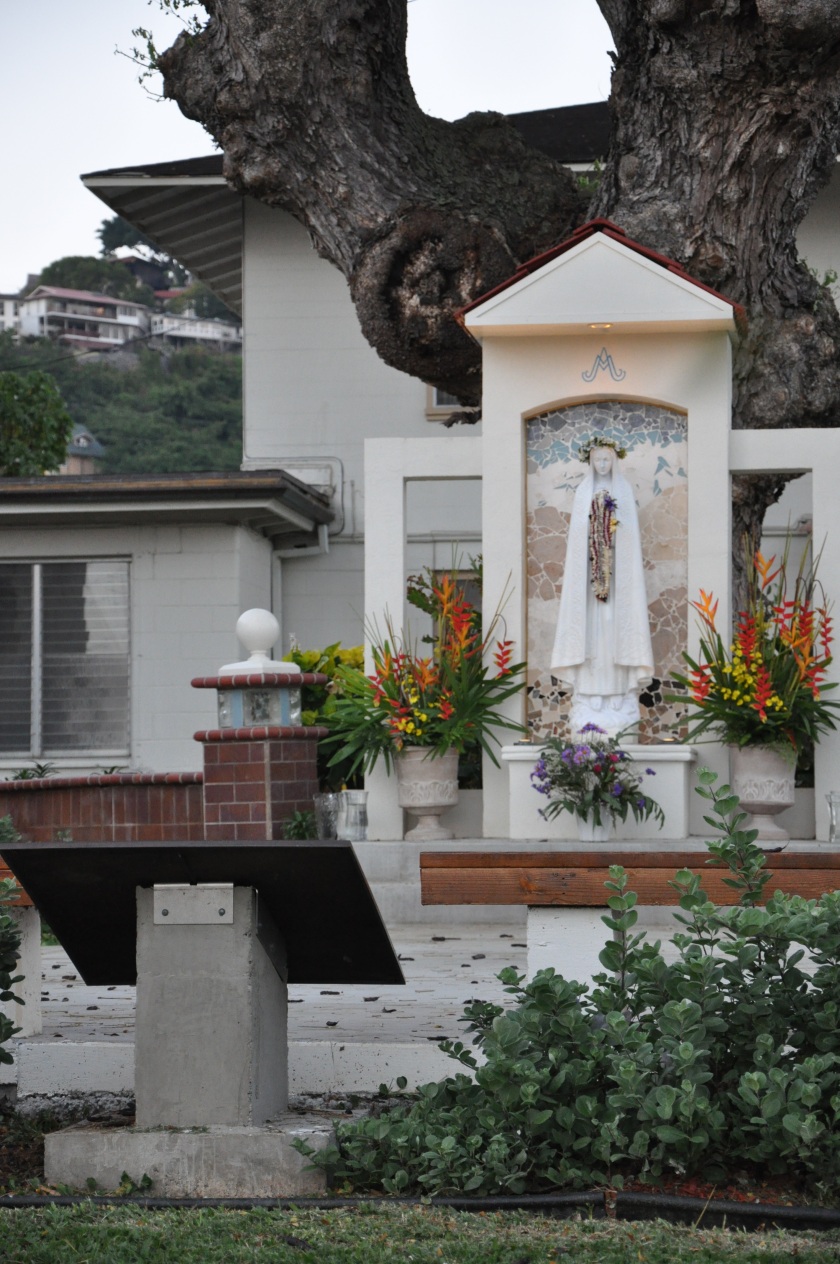
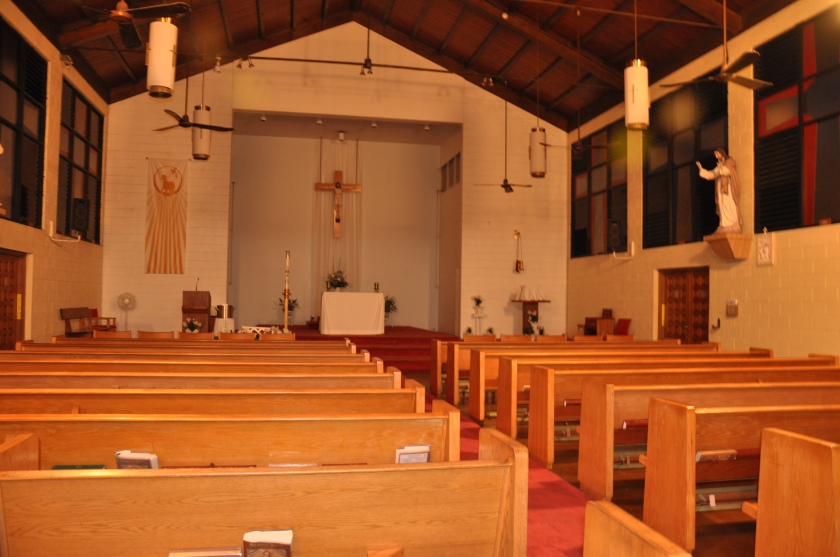
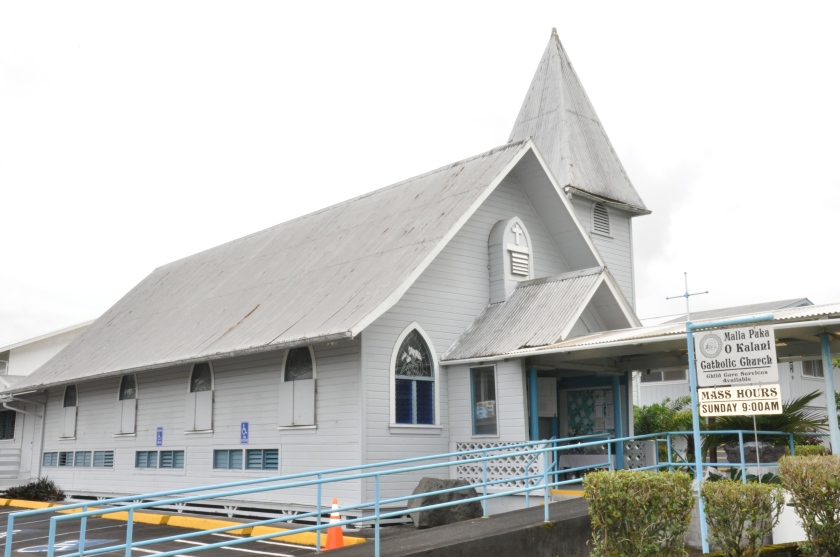 326 Desha Avenue, Hilo, HI 96720
326 Desha Avenue, Hilo, HI 96720